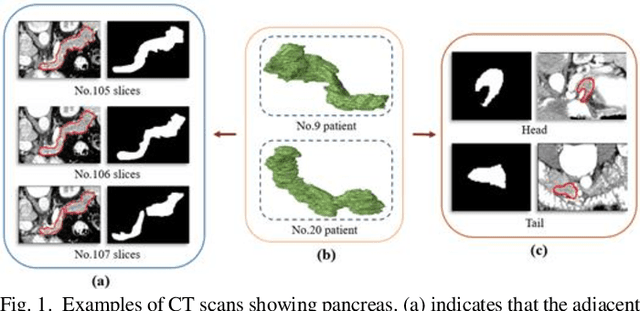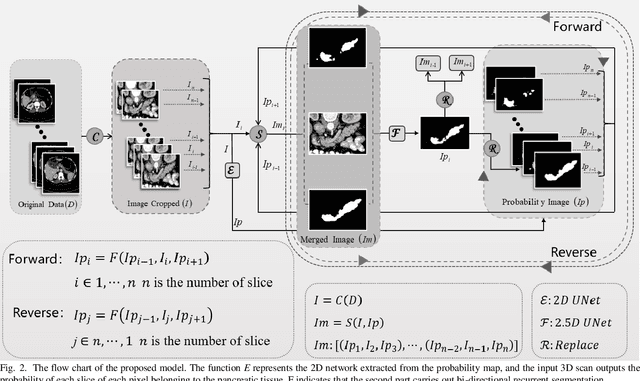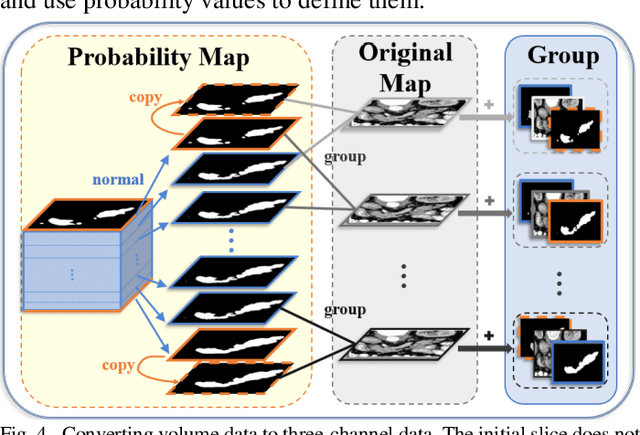Probability Map Guided Bi-directional Recurrent UNet for Pancreas Segmentation
Paper and Code
Apr 07, 2019



Pancreatic cancer is one of the most lethal cancers as morbidity approximates mortality. A method for accurately segmenting the pancreas can assist doctors in the diagnosis and treatment of pancreatic cancer, but huge differences in shape and volume bring difficulties in segmentation. Among the current widely used approaches, the 2D method ignores the spatial information, and the 3D model is limited by high resource consumption and GPU memory occupancy. To address these issues, we propose a bi-directional recurrent UNet based on probabilistic map guidance (PBR-UNet). PBR-UNet includes a feature extraction module for extracting pixel-level probabilistic maps and a bi-directional recurrent module for fine segmentation. The extracted probabilistic map will be used to guide the fine segmentation and bi-directional recurrent module integrates contextual information into the entire network to avoid the loss of spatial information in propagation. By combining the probabilistic map of the adjacent slices with the bi-directional recurrent segmentation of intermediary slice, this paper solves the problem that the 2D network loses three-dimensional information and the 3D model leads to large computational resource consumption. We used Dice similarity coefficients (DSC) to evaluate our approach on NIH pancreatic datasets and eventually achieved a competitive result of 83.35%.
 Add to Chrome
Add to Chrome Add to Firefox
Add to Firefox Add to Edge
Add to Edge